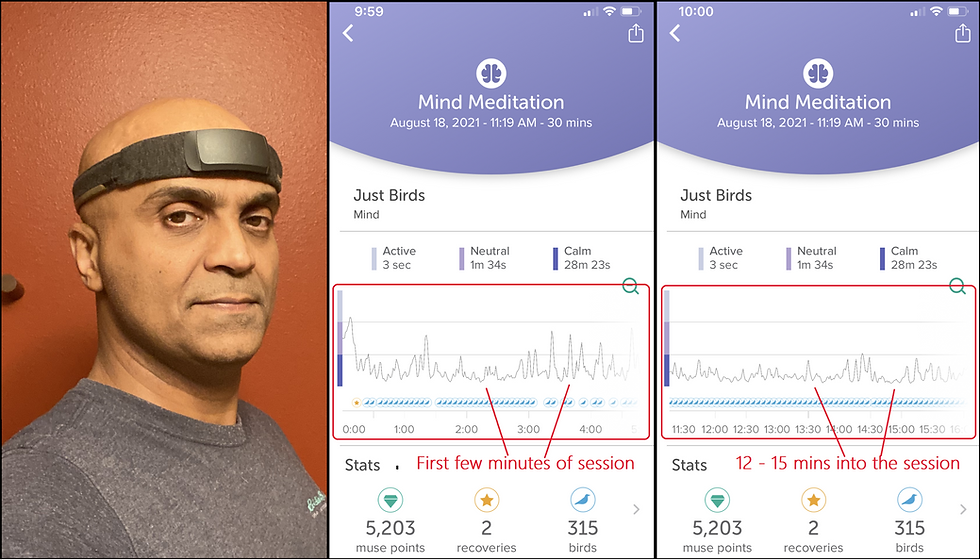What’s Common to String Theory, Cognitive Neuroscience and Buddhism?
- Kris Shankar
- Jul 18, 2022
- 4 min read

I bumped into Ram, a String Theorist by education and cognitive neuroscientist by profession, at a neighborhood party this weekend. Ram also has an interest in Eastern philosophy, which got me thinking about what each of these three fields have to say about the nature of reality. It turns out in each case, reality is unknowable, though for different reasons. We live in an illusory universe where all we see and know is false. Except that it is not a single Matrix we are trapped in, but three! Read on to learn more about the physical, perceptual and psychological prisons that we all inhabit…
The Physical Matrix
String Theory is an arcane branch of theoretical physics which proposes that our 4-dimensional (4D) universe of space and time exists within a larger universe of 10 dimensions (or maybe 11 or 26 dimensions) the basic structure of which is supposedly a scaffold of extremely small vibrating strings. Since our senses and our scientific instruments are capable of making observations only about the 4D universe we live in, String Theory can only make inferences about the exact nature of these extra dimensions, vibrating strings or otherwise. Like a character in a video game come to life who futilely attempts to understand the lines of software, silicon chips and electrical fluctuations that underly her world, the String Theorist will never know the true nature of reality. The same physics that is so good at making sense of the universe we can observe can only speculate about what lies beyond. Perhaps for this reason, String Theory is often likened to metaphysics. The physical universe we live in is a prison with impenetrable walls, the physical matrix.
The Perceptual Matrix
Today, Ram is a cognitive neuroscientist and AI researcher associated with the Allen Institute for Brain Science in Seattle, having left string theory behind. It turns out that cognitive neuroscience has some very profound insights into the nature of our brain and senses. In his deeply insightful TED talk Do we see reality as it is? | YouTube, cognitive psychologist and popular science author Donald Hoffman of UCLA Irvine makes the case that humans can never perceive the reality of the world around us. As he puts it, our brains evolved to ensure survival on the savannah, not for perceiving reality as it is. From the evolutionary point of view, the human brain and senses evolved to create a simplified model of the world to better hunt gazelles, outrun lions and avoid stepping on snakes. We don’t see the electron and proton soup that these animals are made of because it doesn’t have survival value. He goes on to make an even more profound point: even with our best scientific instruments, we cannot see reality. Even the electrons and protons that we observe are only abstractions. Just like we only see pixels when we zoom in ad infinitum on the files and folders on our desktop screens instead of the underlying software running on our computers, we can never perceive the reality of even our own 4D universe. It’s as if Immanuel Kant, the 18th century German philosopher, has been given a new lease of life.
Objects of sense are mere appearances, though they are based upon a thing in itself (noumenon). We cannot know this thing in itself other than by its appearance, namely by way our senses are affected by it (phenomenon).
— Immanuel Kant, Prolegomena, § 32
The world we see around us is a creation of our brain, a perceptual matrix.
The Psychological Matrix
Eastern mindfulness traditions like Buddhism make similar points about the illusory nature of our psychological reality. Buddhism asserts that most of the time, we live in a world of false mental constructs — Maya or delusion — about ourselves, other people and our life situation. Welcome to the psychological matrix. However, instead of being just an intellectual curiosity like the physical matrix or a survival benefit like the perceptual matrix, Maya or the psychological matrix is responsible for dukkha or suffering. If you’ve ever been a victim of obsessive worry, unfounded fears or baseless prejudices (the term echo chamber exists for a reason!) simply to discover that they are creations of your mind, you’ve gotten a glimpse of Maya. Except that Maya runs deep — most of the time, we are like automatons whose behavior is guided by deeply entrenched patterns of belief that sit in our subconscious minds out of reach of our awareness. Remember the last time you blurted out something you later regretted and wondered “now where did that come from?” However, unlike physics or cognitive neuroscience, Buddhism offers an out: it asserts that we can come out of this condition of delusion and suffering by developing mindfulness, or a deep and abiding awareness of reality. Wait a minute, doesn’t Buddhism say reality is unknowable? There’s a little sleight of hand here. As I explained in my previous post, the ultimate reality of Buddhism is the impermanence of all phenomena and “the non-existence of the self”. In a way, there is no reality to know other than the unreality of everything. If you find that confusing, welcome to the philosophical matrix.




Comments